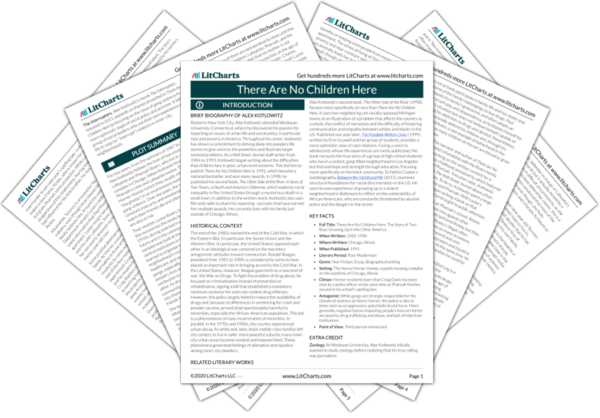Next
Summary
There Are No Children Here Study Guide |
Next
Summary
|
Welcome to the LitCharts study guide on Alex Kotlowitz's There Are No Children Here. Created by the original team behind SparkNotes, LitCharts are the world's best literature guides.

Zoology. At Wesleyan University, Alex Kotlowitz initially wanted to study zoology before realizing that his true calling was journalism.
The Interrupters. Alex Kotlowitz’s movie The Interrupters, released in 2011, expands on themes broached in There Are No Children Here by focusing on the issue of gang violence from a more optimistic angle of social policy and activism. It follows a group of social leaders who use their own experience with gang life to stop (or “interrupt”) violence in inner-city neighborhoods.